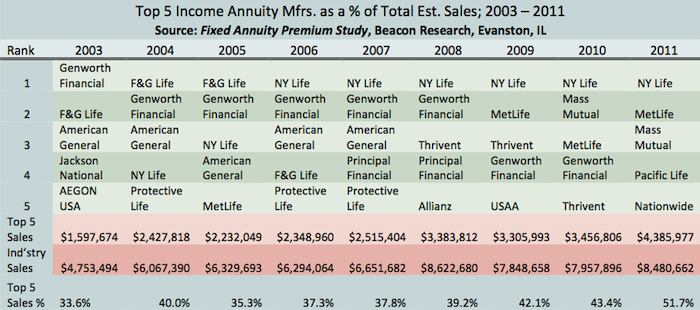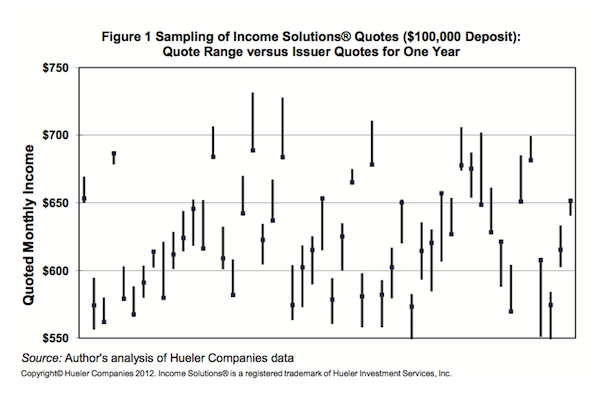Mercer launches “My Retirement Workshop” for plan participants
Mercer, the provider of defined contribution plan services to 1.3 million participants, benefits has launched “My Retirement Workshop,” (www.myretirementworkshop.com) an online retirement planning and education campaign for employees whose 401(k) plans it administers.
Styled after popular home improvement TV shows, the website provides interactive tools and instruction to help investors “fix up” their retirement plans.
My Retirement Workshop consists of four main features:
- A brief self-assessment tool that provides personalized feedback and recommended actions.
- A selection of projects that address common retirement planning challenges.
- A toolbox of calculators, worksheets and widgets.
- An opportunity to “learn from the pros” by watching videos, listening to podcasts or reading articles.
Visitors to the site can interact with peers through discussion boards, take quick polls and share the site through social media. The My Retirement Workshop online education campaign was launched in early May and will be a year-long campaign, with new content and features to be added in the fall.
Participants can access My Retirement Workshop through their plan’s website. A public version of the site is also available at myretirementworkshop.com, where mobile device users also can access a mobile-optimized variation of the site for easy viewing.
Plan participants would welcome an income solution: The Hartford
Three out of five Americans (64%) say their employer’s 401(k) or other retirement plan does not allow them to turn their savings into guaranteed income in retirement or they are unsure if it does, according to The Hartford’s Guaranteed Retirement Income study.
The concept of guaranteed retirement income appeals most to those with a combined annual household income of $50,000-$74,000. A total of 92% in that demographic would like their employer to offer a guaranteed income option compared to 87% percent of those earning $30,000-$49,000, 86% earning less than $30,000, and 84 % earning $75,000 or more.
Women (89%) had a slightly greater preference for guaranteed retirement income than men (84%).
Perhaps because younger workers are less likely to have defined benefit pensions at work, the study also showed that the younger the employees, the more interested in a income solution they were:
- Overall, 87% of respondents of all ages say they find it “very” or “somewhat” appealing to be able to turn at least a portion of their retirement savings into a guaranteed income.
- 95% of workers younger than 30 say the same, the highest of any age group.
- The same sentiment was expressed by 90% of those ages 30-39, 89% of ages 40-49, 88% of ages 50-59, and 77% of those age 60 and older.
The Hartford’s study, which surveyed 2,500 Americans ages 18 and older earlier this spring, was conducted following the introduction of The Hartford Lifetime Income (HLI), an investment option that allows 401(k) participants to use their savings to create a pension-like income in retirement.
Michael Smith named Chief Risk Officer of ING U.S.
Michael Smith has been named chief risk officer with responsibility for overseeing the enterprise-wide and business-level risk monitoring and management program for ING U.S., the company reported.
Smith joined ING in 2009 as chief financial officer and chief risk officer for the ING U.S. Annuity business. In 2011, he became chief executive officer of the ING U.S. Annuity business, and led the effort to manage the variable annuity book of business into a run-off closed block.
Smith’s responsibilities include managing the framework for measuring, controlling, hedging and pricing risk. In addition to his risk management role, he will continue to oversee the Closed-Block Variable Annuity run-off business.
Before joining ING, he was the head of Profitability and Risk Management for Retirement Solutions at Lincoln Financial Group (LFG), where he held several leadership positions, including chief actuarial officer for Lincoln National Life, chief administrative officer and CFO for Lincoln Financial Distributors Inc. (LFD), CFO and chief risk officer for LFG’s Life and Annuity division and head of customer support for LFG’s Employer Markets division.
An actuary and CFA, Smith holds bachelor’s degrees in economics and Russian studies from the University of Michigan.
Edward Jones first in “investor satisfaction: J.D. Power & Assoc.
For the sixth year out of the past eight, Edward Jones has ranked highest in investor satisfaction among full service brokerage firms, according to the J.D. Power and Associates 2012 Full Service Investor Satisfaction Study.
The study measures overall investor satisfaction with full service investment firms on the basis of seven factors: investment advisor, investment performance, account information, account offerings, commissions and fees, website and problem resolution.
Edward Jones ranked highest in investor satisfaction by J.D. Power and Associates in 2010 and 2009, from 2005 through 2007, and in a tie in 2002, when the study began. Edward Jones in Canada ranked highest in the J.D. Power and Associates Canadian Full Service Investor Satisfaction Study in 2006 through 2008.
The 2012 Full Service Investor Satisfaction Study is based on responses from 4,378 investors who primarily invest with one of the 14 firms included in the study. The study was fielded in February 2012. Edward Jones’ 12,000-plus financial advisors serve almost 7 million clients individual investors in the United States and Canada.
Americans respect/disrespect Wall Street
Each year The Harris Poll asks the Americans what they think about “the nation’s largest banks, investment banks, stockbrokers, and other financial institutions”—the businesses known metonymically as Wall Street.
Again, this year, the American public said that the Street has problems. Eight percent of those polled agreed with the statement that Wall Street “benefits the country a lot.” (As recently as 2004, that number was 24%.) Twice as many—16%—said Wall Street “harms the country a lot.”
By a margin of 82% to 15%, American adults believe that “Wall Street should be subject to tougher regulation.” But, by 62% to 34%, Americans also believe that “Wall Street is absolutely essential,” the poll showed. Over half of U.S. adults, or 55% (down from 80% in 1997) believe that Wall Street benefits the country while 42% (versus 13% in 1997) believe it harms the country.
Some of the other main findings of this year’s poll, which was conducted among 1,016 adults in mid-April, were:
- Almost four in five Americans (78%) believe that Wall Street firms should only pay bonuses when they are doing well and making good profits;
- Seven in ten U.S. adults (70%) believe most people on Wall Street would be willing to break the law if they believed they could make a lot of money and get away with it;
- Just over two-thirds of adults (68%) do not believe that people on Wall Street are as honest and moral as other people;
- Two-thirds (67%) of U.S. adults do not believe that what is good for Wall Street is good for the country; and,
- Almost two-thirds (64%) do not believe most successful people on Wall Street deserve to make the kind of money they earn.
New advisor tool from Nationwide to help with health care cost planning
Nationwide Financial has launched a new online tool, called the Personal Health Care Assessment program, to help advisors estimate their clients’ health care expenses in retirement.
The program uses proprietary health risk analysis and up-to-date actuarial cost data such as personal health and lifestyle information, health care costs, actuarial data and medical coverage to provide a meaningful, personalized cost estimate that will help clients plan for medical expenses.
To illustrate the opportunity that advisors have for using the medical issue as a way to enhance or initiate client relationships, Nationwide also sponsored a Harris Poll showing that nearly half of soon-to-be retired high net worth Americans say they are “terrified of what health care costs may do to their retirement plans,” and nearly three in four say soaring health care costs is among their top retirement fears.
The Poll of 1,250 Americans (half of whom plan to retire by 2020) with $250,000 or more in household assets showed that 38% of those nearing retirement haven’t discussed their retirement with an advisor. Of those who have, only one in five discussed health care costs in retirement not covered by Medicare.
The survey also revealed that 43% of soon to be retired Americans say they plan to discuss health care costs with a financial advisor. Of the 12% of near-retired Americans who said they plan to switch financial advisors, 54% said they would be likelier to stay with their current advisor if they could get help planning for health care expenses in retirement.
Although three in five (59%) near-retirees say that most financial advisors are not equipped to discuss retirement health care costs with their clients, many of those who have indicated that it was worthwhile. Only one in five surveyed say they are confident in their knowledge of Medicare coverage, and more than half say it is “very to extremely important” they educate themselves on Medicare coverage when planning for retirement.
Near-retirees who plan to enroll in Medicare estimated that Medicare would pay for 68% of their health care costs in retirement. But when asked how they arrived at that percentage, nearly three in four said they guessed or didn’t know, 15% based on their own research, 7% spoke with friends who have already retired and 4% said their financial advisor told them. According to the Employee Benefit Research Institute, Medicare currently covers only about 51% of the expenses associated with health care services.
While 45% expect health care to be their biggest expense throughout retirement, on average they expect to spend only $5,621 a year on health care. But a 2010 study estimated out-of-pocket health care expenses for a 65-year-old couple retiring today and living for 20 years to range from $250,000 to $430,000, or as much as $10,750 a year per person.
Harris Interactive collected data for the survey from January 3-19, 2012. Sampling included 625 adults ages 55+ having $250,000 or more in household assets who plan to retire by 2012 and 625 retired adults ages 65+ having $250,000 or more in household assets.
Waste from “suboptimal” trade execution cited
As much as $5 billion is wasted each year in sub-optimal broker routing decisions, according to an examination of the execution quality of marketable limit orders and at-the-quote limit orders on U.S. equity exchanges by Woodbine Associates, Inc.
The report, “U.S. Equity Exchange Performance,” focuses on how exchanges compare in execution quality and information asymmetry associated with basic order types central to price discovery.
“There are differences among exchanges,” said Matt Samelson, principal and author of the report. “The buy-side must look out for themselves, intensively review sell-side order handling, and insist on accountability for sub-optimal routing. At the same time, the buy-side should be willing to pay higher commissions to brokers that truly provide superior order routing and premium service.”
The third annually-produced report examines exchange performance in marketable limit orders and at-the-quote limit orders less than 2,000 shares, without special order handling instructions, traded during normal trading sessions, excluding the opening and closing trades.
Marketable limit orders are examined on the basis of execution prices and the degree of post-execution price reversion. At-the-quote limit orders are examined only on the basis of price reversion. Orders are examined in the context of capitalization and listing exchange.
“Many orders are not routed to the right venues at the right time for the right reasons,” added Samelson. “When a broker’s fiduciary responsibility to a client’s execution ends, economics turn toward the broker and away from the client. Pennies earned by brokers may cost principals dollars in execution quality. It is important that each client knows where their broker’s fiduciary responsibility ends.”
To learn more, e-mail Ryan Surprenant ([email protected]) or call 203-274-8970, ext. 203.
J.P. Morgan offers Financial Engines’ Income+ service to 401(k) plans
Financial Engines and J.P. Morgan Retirement Plan Services have announced that Financial Engines® Income+ has been integrated into J.P. Morgan Retirement Plan Services’ 401(k) offering.
Income+ is available as part of J.P. Morgan’s in-plan professionally managed account program, J.P. Morgan Personal Asset Manager, which works within a 401(k)’s existing investment line-up to enable more personalized portfolios designed to provide steady retirement income.
Income+ is designed to balance safety and growth in the years leading up to retirement. It provides steady monthly payouts from a 401(k) account, which can last for life with the optional purchase of an out-of-plan annuity.
Fidelity enhances its smartphone app
Fidelity Investments said its free mobile phone “app” has been updated to enable stock plan participants to access and track their portfolios and conduct transactions from their iPhone, iPod touch or Android.
The app enables participants with stock option plans to exercise and sell their options by following simple prompts. Investors can determine the total value of all of their options, the price of their exercisable options, the estimated value of their options and the aggregated tax rate that will apply if the options are sold.
Previously, participants could view their stock plan account balances from their iPhone, iPod touch or Android smart phone but could not conduct transactions. Other recent mobile enhancements include improved trading and research capabilities, comprehensive international market analysis and mobile check deposit for IRA and brokerage customers.
Participants now using FutureAdvisor, a free planning tool, to track $1 billion
Less than 60 days since its initial launch, FutureAdvisor, a company started by West Coast techies that provides free web-based retirement income planning tools, says that it is of over $1 billion in assets and has identified more than $37 million in fee-saving opportunities for users.
FutureAdvisor’s co-founder, Bo Lu, also said the company has released a private beta version of a new product called “FutureAdvisor Premium” that provides automatic rebalancing and portfolio cleanup.
Since its launch last March 20, FutureAdvisor has experienced an increase of 25% growth week over week in people adopting the service, with many new users coming from Microsoft, Google, Intuit, and Oracle. FutureAdvisor supports more than 100 of the largest 401(k) plans in the country.
According to a release, the company’s “new [rebalancing] service eliminates an often complex and frustrating process and moves the industry one step closer to providing users the convenience of a portfolio that manages itself.”





 RIJ: From what we’ve heard, sales are going better than expected.
RIJ: From what we’ve heard, sales are going better than expected.





